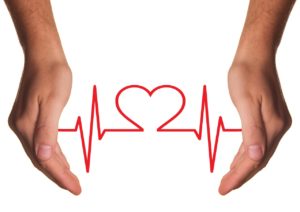Since I have hit retirement age I’ve noticed more and more loved ones, old friends and acquaintances are having heart problems and often when we chat one question always seems to rise to the surface – stroke vs heart attack: What’s the difference?
 As an old friend of ours had a stroke recently I thought today I would pass on a few tips about reducing the risks of having a stroke. When you see first-hand the mental and physical anguish it causes within a family (and friends) I thought anything that can help reduce the risk of this happening to any of my readers was well worth writing about.
As an old friend of ours had a stroke recently I thought today I would pass on a few tips about reducing the risks of having a stroke. When you see first-hand the mental and physical anguish it causes within a family (and friends) I thought anything that can help reduce the risk of this happening to any of my readers was well worth writing about.
Also, as an active ageing coach and activist, what I would really like you all to understand more than anything else is this. Regular exercise is like a miracle cure for your lifestyle ailments and has the ability to eliminate those issues – all of them!
Read here about the 6 Unexpected Benefits of Exercise for Seniors and you will soon see what I mean.
Now, let’s get started.
Stroke is a condition that falls under the umbrella of heart disease which tends to confuse many people so I have put together this short resume of the risks of having a stroke and some ideas for heart disease prevention. I hope you find it helpful.
Most people don’t seem to realize there are three kinds of stroke and that there are things you can do to reduce your risk of these kinds of stroke.
Here are the 3 major kinds of stroke.
1. Thrombotic stroke.
This is the type of stroke in which plaques build up on the arterial walls of the arteries leading to the brain. The plaques narrow the blood vessels and clots can form in the narrowed areas, causing a reduction in oxygen and blood flow to the brain stops.
2. Embolic stroke.
This is the type of stroke in which there is a blood clot somewhere in the body (usually on a heart valve) that breaks off and travels through the bloodstream so that it cuts off the circulation to an area of the brain, resulting in a stroke.
3. Hemorrhagic stroke.
Rather than an area of the brain being without blood and oxygen, a blood vessel in the brain opens up, causing bleeding to occur within the brain. This can be due to areas of weakness in the blood vessels or to aneurysms in the brain that open up and bleed.
Stroke Statistics in the United States.
• Stroke is the 3rd leading cause of death in the United States
• There are 795,000 strokes every year
• Someone suffers a stroke every 40 seconds of each and every day in the US
• Stroke is the leading reason for serious disability overall, and those who survive are often left with paralysis and speech impairment causing long term disability, often requiring long term care
• After the age of 55 years old, the risk for stroke doubles every decade
• Almost ¾ of all strokes occur in people age older than 65.
(Data source: Internet Stroke Centre). Editor’s note: These figures are comparable with most other developed countries around the world.
5 Prevention Tips to Reduce the Risks of Having a Stroke.
There are different ways to prevent a stroke depending on the type of stroke you are trying to prevent and there are also a number of things you can do that prevent a certain type of stroke but it has the potential to worsen another type of stroke.
Here’s the 5 things you can do to help prevent a stroke:

1. Maintain a normal blood pressure.
This holds true for all kinds of stroke. High blood pressure contributes to arterial spasm and increases the risk of thrombotic stroke. If your blood pressure is too high, it can push the blood clot in the heart from the heart valve into the circulatory system of the brain, resulting in an embolic stroke. In a completely different way, high blood pressure can cause hemorrhagic strokes. If there is a weakness in the walls of any part of the brain’s circulatory system, high blood pressure can cause that weak area to open up, resulting in the kind of bleeding you see in a hemorrhagic stroke.
2. Keep your cholesterol within the recommended levels.
Cholesterol is what makes up part of the plaques that contribute to getting a thrombotic stroke. If you maintain a good level of cholesterol, the plaques don’t build up so much and the chance that a blood clot can form in the arteries is much less. You can keep a good cholesterol level by eating food that is low in cholesterol or by taking medications designed to lower the cholesterol level.
3. Stop smoking!
I shouldn’t even have to mention this but unfortunately there are still a large number of people out there who still smoke even though they are well aware of the health issues. Smoking has the potential to raise your blood pressure, increasing the risk of all kinds of strokes. Smoking also contributes to plaque formation in the walls of the blood vessels so that the risk of thrombotic stroke increases. The longer you smoke, the greater is the risk of developing all kinds of heart disease, including that of thrombotic stroke so why not quit while you are still ahead.
4. Take a baby aspirin.
Baby aspirin is a common medication used to prevent the recurrence of heart attack in a patient who has already had a heart attack. Aspirin is a platelet inhibitor, which means it blocks platelets from sticking together and forming a blood clot. This same phenomenon can work in the prevention of both thrombotic strokes and embolic strokes. If the platelets cannot form a blood clot, it will prevent a blood clot from forming on a heart valve so that it can’t travel to an area of the brain, leading to an embolic stroke. In the same way, when platelets are blocked from forming a clot inside a narrowed area of the blood vessels leading to the brain, this thwarts the onset of a thrombotic stroke.
NOTE: Do not take any form of medication without consulting your family doctor first. Self-medication without expert diagnosis can be very dangerous.
5. Live a healthy lifestyle.
By this I mean your diet (what and how much you eat and drink) and the amount of exercise you engage in each week will go a long way to beat high blood pressure and help to keep it at normal levels. Not smoking, making sure you have a moderate regular exercise program in place and your cholesterol is kept within the recommended levels will all go a long way towards reducing the possible incidence of each type of stroke.
If you are concerned about stroke, or any type of heart disease, then make sure you see your family doctor and have a full physical and relevant screenings to be sure there is not more you can do to ensure you remain in optimal health.
May health be with you – like and share – cheers – John.
Leave a Reply